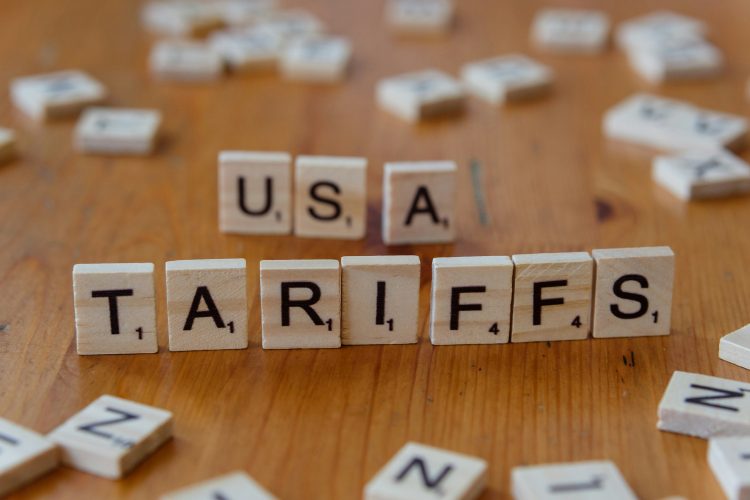
With the July 9 deadline approaching, experts weigh in on the impact of tariffs on the shed-building industry.
The tariff war currently being waged between President Donald Trump and much of the world impacts every sector of business and manufacturing, including the shed-building industry.
New tariffs have been imposed by the president on various goods from several nations, leading many American trade partners to retaliate with their own tariffs, surcharges, and taxes on goods imported from the United States.
Sweeping U.S. tariffs that had been subject to a 90-day freeze were set to expire on July 9. In the weeks leading up to the freeze’s deadline, the Trump administration announced trade deals with several nations, including China, the United Kingdom, and most recently, Vietnam.
TARIFF IMPACTS
According to George Carillo, co-founder and CEO of the Hispanic Construction Council, representing over 48,000 members, the ever-changing landscape of tariffs, taxes, and surcharges is “raising concern because of its whiplash effect. Right now, these tariff percentages are changing.”
While Carillo acknowledges the construction industry has withstood tariffs on imported and exported goods in the past, he says things are different this time around. In the current climate of additional and often-changing tariffs, surcharges, and taxes, construction companies are actually feeling the instability, he explains.
“It is hard to bid projects when you’re unsure of the pricing structure. Anything dealing with steel adds another layer of uncertainty,” says Carillo.
When President Trump ended trade discussions with Canada on June 27, he also said new tariffs on certain Canadian products would be announced shortly. They have not yet been introduced.
According to the president, additional tariffs on Canadian imports were warranted because that nation recently imposed a Digital Services Tax (DST) on American technology companies. Trump called the DST a “direct and blatant attack” on the United States.
On June 4, the U.S. doubled its tariff on steel imported from Canada, increasing it from 25 percent to 50 percent. The current situation is part of a broader trade relationship between the U.S., Canada, and Mexico, governed by the United States-Mexico-Canada Trade Agreement (USMCA). That pact has been in effect since 2020.
A VIEW FROM THE INSIDE LOOKING OUT
As head of pre-construction for California-based design-to-build entity Snap ADU, Ben Gagnon is involved in all aspects of construction in the field. His responsibilities encompass everything from “sales to permit,” and include leading project management teams.
Snap ADU specializes in all phases of building detached residential access dwelling units (ADU), erected separately from a main residence. Business is booming on the West Coast for these flexible structures, he says, noting they are often seen as an answer to the region’s massive housing crisis. Accessory Dwelling Units (ADUs) may serve a range of functions, including long-term rentals or multi-generational housing.
So far, escalating tariffs have not proven overly detrimental to Snap ADU’s bottom line, says Gagnon, although that’s not to say sales are as brisk as they were prior to their imposition.
One reason Snap ADU hasn’t suffered as much as other entities is that lumber is not a major component of the company’s ADUs.
“In the grand scheme of a contract, lumber only comprises 5 to 7 percent of total costs.” In the average ADU costing $400,000 to build, only $50,000 or so is spent on lumber, he says.
“Still, it affects our pricing. We check (tariffs) quarterly. A swing of just a few percentage points isn’t felt as much by us as a shed builder, who uses nearly all wood (to build a shed),” says Gagnon.
In most sheds, wood subfloors and wooden exterior siding are the primary materials used. Because of its reliance on lumber for its products, the shed industry suffers disproportionately than, say, a construction firm like Snap ADU.
He surmises the shed-building industry is impacted more by tariffs than his line of construction because of its incredible reliance on lumber and wood.
“Tariffs on lumber would affect a shed builder more than a conditioned livable space, like we build,” says Gagnon. Although lumber is used in ADUs, that structure requires additional finishes not needed in a shed. That means lumber is just a component of the overall building. But, because sheds are built with lumber and steel, two materials specifically subject to tariffs, the industry is impacted more, says Gagnon.
FROM AN ACCOUNTANT’S PERSPECTIVE
Christoper Kelly is a partner with Anchin LLP, an accounting firm with a focus on the construction industry.
Kelly reports he had clients whose construction projects were temporarily stalled by tariffs earlier in 2025, but “they are back up now.”
He advises shed manufacturers to be wary of tariffs because they bear the risk when buying construction materials.
“There is a period of time where you have a signed contract (with a customer) but you haven’t yet purchased the materials,” he says, labeling that “the tariff risk” period. “It is an area of uncertainty because we don’t know where tariffs will be when the materials are bought.
“There is a cost to steel and lumber. Fifty years ago, it was less. Inflation and many other factors impact prices.”
There is a bright side, he says. “When tariffs are finalized, then it will be business as usual.”
But Gagnon attributes the recent slight decline in the market to more than merely tariffs.
“In the political and economic environment right now, people aren’t eager to spend as much on an ADU,” he says.

